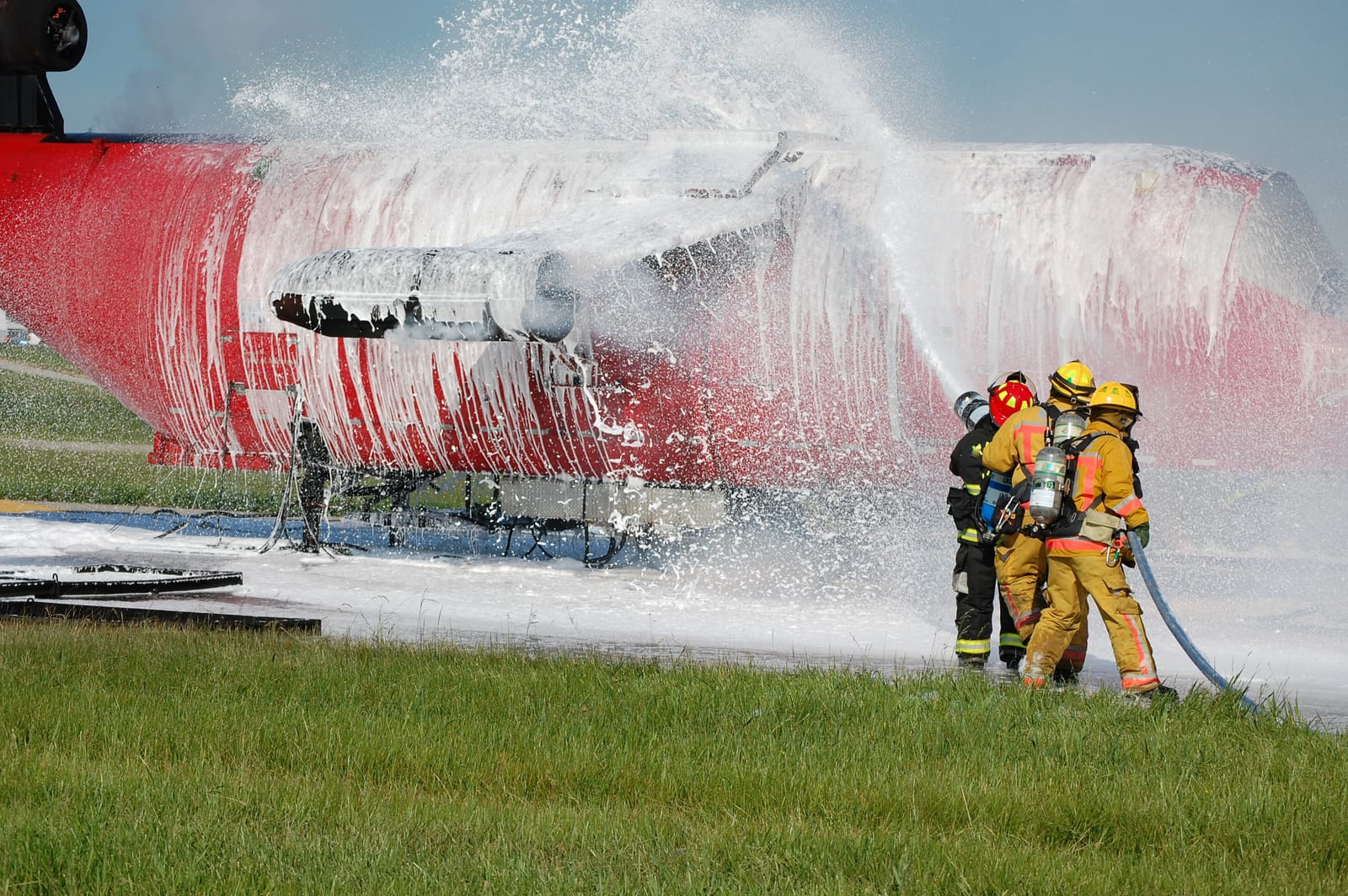ELLSWORTH AIR FORCE BASE, S.D. – Military veterans who served on this base near Rapid City and at Joe Foss Field Air National Guard Station in Sioux Falls are part of new national class-action lawsuits seeking damages due to exposure to toxic chemicals in firefighting foam.
The lawsuits center on cancers, hormonal problems and gastrointestinal illnesses believed to have been caused by exposure to so-called forever chemicals present in firefighting foam that was used for more than 60 years to put out petroleum fires at U.S. airports and military installations.
The chemicals are now known to have caused contamination of groundwater wells and drinking water systems across the country. Civilians who lived or worked at or near military facilities have also gotten sick and are part of the ongoing cases.
The illnesses related to service at military bases in South Dakota are the latest of a series of health problems Rushmore State veterans have suffered due to use of chemicals and exposure to toxic substances in both combat and non-combat environments.

In previous reporting, South Dakota News Watch has shown how South Dakota residents suffered serious illnesses due to toxic exposure while on duty, and how in most cases the military knew of the risks but did not act until after sicknesses began to pile up.
Veteran Jerry Somsen of Webster was diagnosed with Parkinson’s disease after being exposed to toxic fumes from burn pits where hazardous materials were disposed of by burning in Iraq. Marine veteran Ronald Lawson of Sturgis was diagnosed with throat cancer and a range of other illnesses after drinking contaminated water at Camp Lejeune in North Carolina. And now, Air Force veteran Casey Kenrick of Rapid City — who suffers from ulcerative colitis — has signed onto the class-action lawsuit seeking damages for exposure to chemicals from firefighting foam used at Ellsworth.
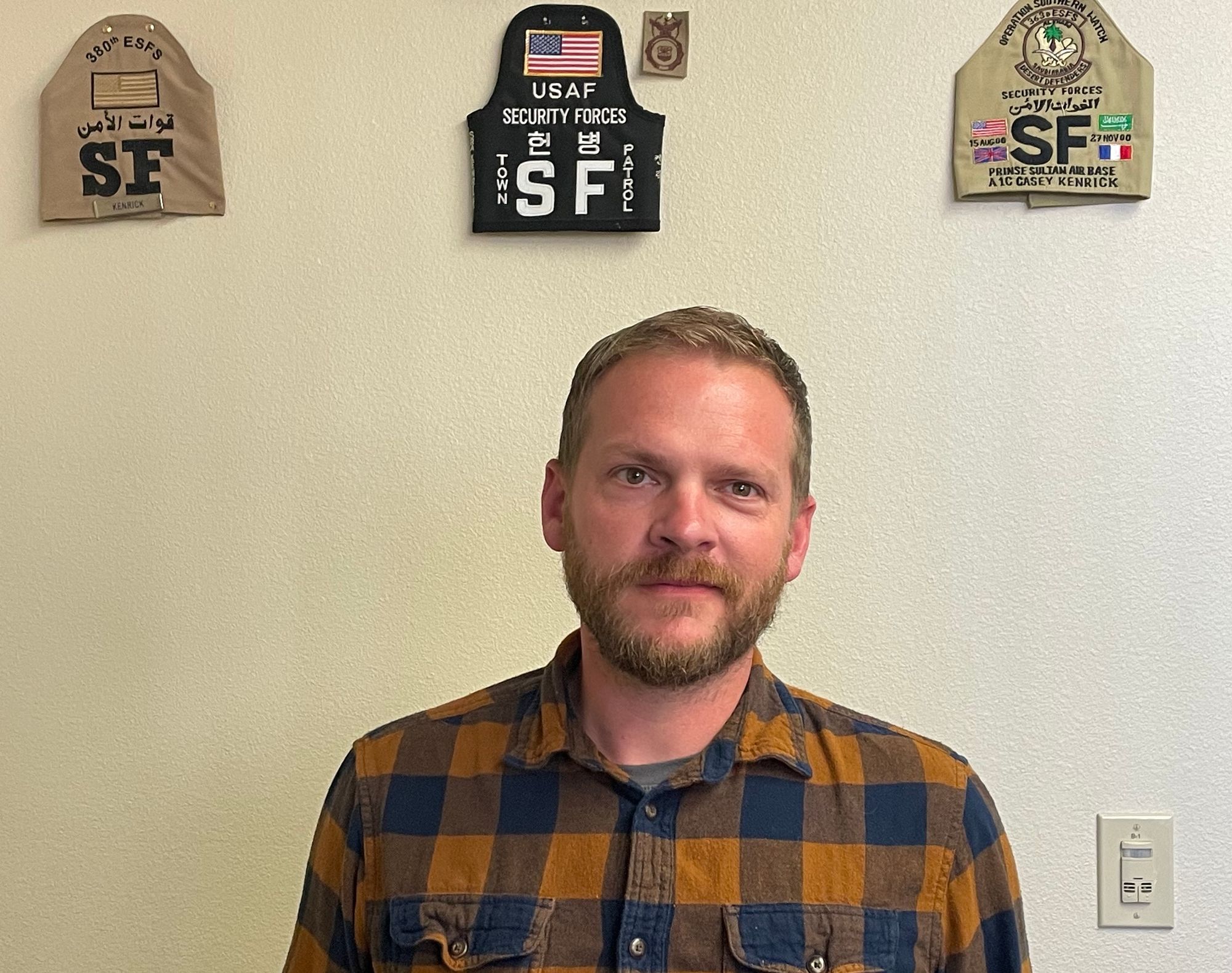
‘Still being put at risk’
The dangerous firefighting foam remains in use by the U.S. military, though a gradual reduction has been underway for several years and a full phase-out is expected by the end of 2024, according to Yahn Olson, a lawyer for the Environmental Litigation Group, P.C.
His firm is handling class-action lawsuits on behalf of veterans and civilians affected by toxic exposures at Camp Lejeune and military bases where firefighting foam was used.
“Members of our military are still being put at risk today,” he said. “They (the military) have known about it for a while and it’s taken them a long time to take any action.”
The firefighting foam illnesses follow a pattern of other health problems caused by use of Agent Orange defoliant in Vietnam, hazardous fumes from burn pits in the Middle East and extreme toxicity of drinking water at Camp Lejeune.
Olson said the recent litigation surrounding contaminants at Camp Lejeune and from firefighting foam at other installations are part of a trend in which American military members are being put at risk of life-altering illnesses that often don’t involve combat or activities directly related to military interventions.
“It seems like the one thing you don’t have to worry about is dying in a war zone, but you do have to worry about toxic exposure to Agent Orange, asbestos, burn pits or contaminated water,” said Olson, who hails from a military family. “Even with the defective 3M ear plugs, it’s a pattern of (non-combat) risk that’s been going on for a while.”
Officials from the Air Force and National Guard who responded to questions from News Watch said they are aware of contamination at Ellsworth and Foss, and they’re taking steps to both keep people safe and remediate the problems.
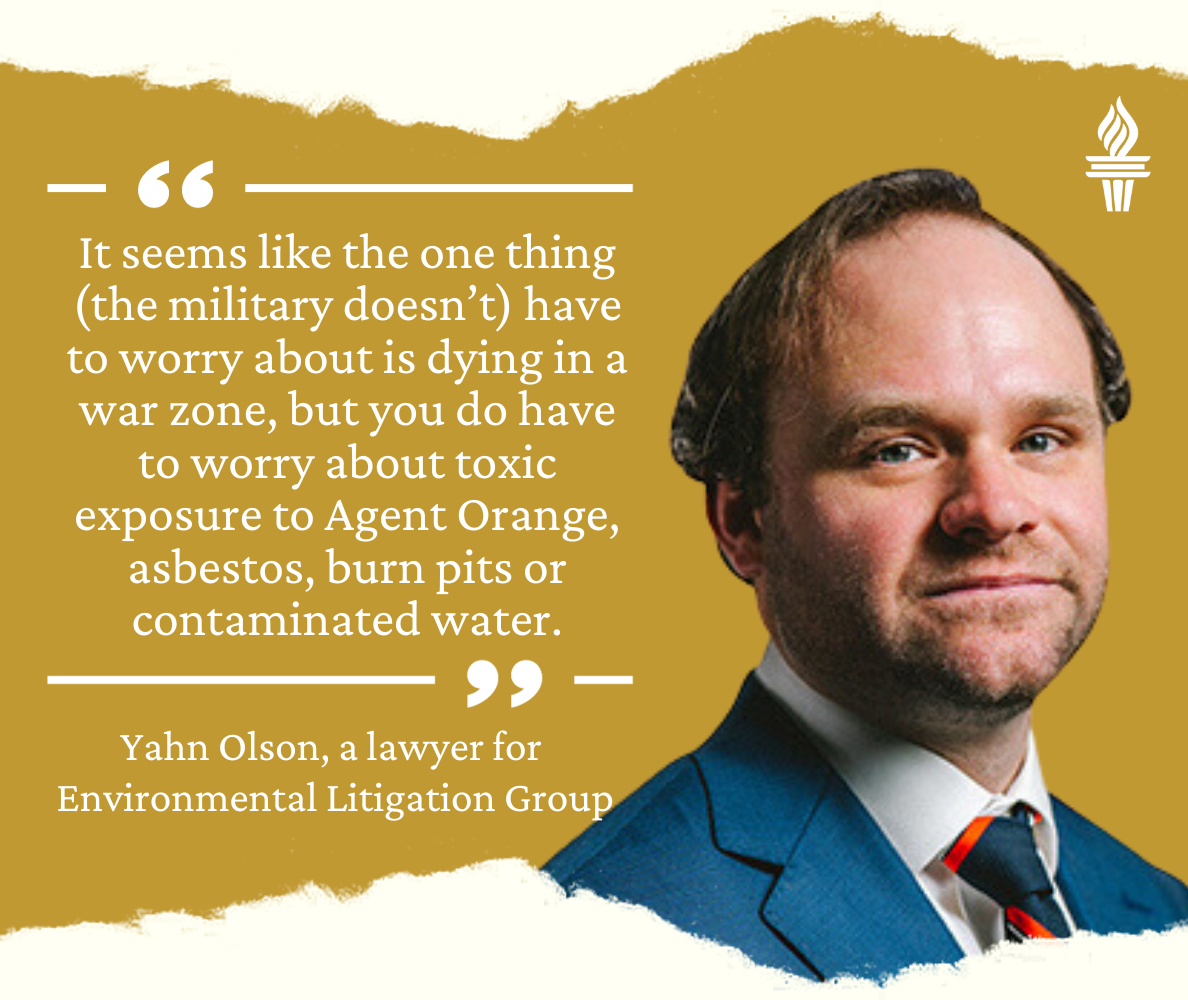
However, the pattern of sickness suffered by service members has caused some veterans to view the military as uncaring and of putting people at risk beyond combat situations in order to carry out its larger mission to protect the nation.
Kenrick said he remains “disillusioned” that the military apparently knew about the dangers of the firefighting foam and other toxic exposures to veterans but did not take action to immediately protect service men and women.
“Obviously they knew something was wrong, but the military doesn’t seem to do anything proactive,” said Kenrick, a lieutenant in the Pennington County Sheriff’s Office.
“They only seem to act after someone sues them, so in a sense the government is complicit in this if they knew about it and didn’t take any preventive or proactive approaches to deal with these problems and then help these people.”
What are ‘forever chemicals?’
The new class-action lawsuits center on illnesses caused by perfluoroalkyl and polyfluoroalkyl substances, or PFAS, which can be found in a wide range of products ranging from firefighting foam to clothing to household products like non-stick cookware.
PFAS have increasingly raised health concerns after being found in drinking water systems and groundwater wells across the country, including at private wells in South Dakota and in municipal wells in Sioux Falls.
PFAS and related chemicals known as PFOS and PFOA are widely known as “forever chemicals” because their chemical composition makes them extremely difficult to break down within water, soil or the human body.

The lawsuits related to chemical contamination from firefighting foam at military installations are one small part of a larger, national legal crucible roiling around PFAS chemicals, which have burst into the public consciousness in recent years as their ubiquitous nature and potentially dangerous impacts on human health have become better understood.
In June, the 3M Co. agreed to pay $10.3 billion to hundreds of municipal water systems across the country to settle claims that the firefighting foam produced by 3M caused runoff of PFAS chemicals that seeped into drinking water systems.
Large-scale testing programs and remediation efforts are already underway to reduce the potential health effects of PFAS contamination in water systems across the U.S., including at military bases.
Firefighting foam leads to toxic runoff
The PFAS chemicals in firefighting foam are particularly worrisome due to decades-long use and the foam’s propensity to liquify and enter into groundwater wells and public water systems.
The Environmental Protection Agency announced new safety guidelines for the presence of PFAS in drinking water, which could further intensify efforts to identify where the chemicals are present and to take steps to better protect the public.
Some experts have projected that it will cost roughly $400 billion nationwide to meet the new guidelines.
Officials from the Air Force and National Guard acknowledged in emails sent to News Watch that PFAS contamination has taken place at the two installations in South Dakota. They said the government has taken steps to make their South Dakota bases safer and to phase out the use of firefighting foam containing PFAS.
The city of Sioux Falls has shuttered the contaminated wells and is providing safe drinking water through other sources. Residents of neighborhoods around Ellsworth where wells are contaminated have been provided bottled water for years, and new multi-million-dollar efforts are underway to drill new wells or connect the residences to nearby municipal systems.
And yet, the lingering effects of direct exposure to firefighting foam or through consumption and use of contaminated water are still coming into focus as both veterans and civilians who served or lived at or near military bases receive startling diagnoses of new illnesses.
Military career cut short
Kenrick, 43, hoped to have a career as a member of the Air Force Security Forces and served for several years in the military police. But his goal was upended by a significant illness that he believes may have been caused by exposure to toxic chemicals in the water at Ellsworth Air Force Base, where he was stationed off and on between 1999 and 2004.

When Kenrick was at Ellsworth, he lived both in on-base dorms and in housing outside the current base boundaries, where he used the water for drinking, cooking and bathing. He never had a concern he may be ingesting contaminated water or was being exposed to dangerous chemicals.
“You would have never known there was a problem with the water,” he said. “There was no indication or warning about anything wrong with the water, no orders to boil the water or not to drink it.”
While at Ellsworth, Kenrick was diagnosed with ulcerative colitis, an inflammatory bowel disease that can be debilitating for some patients.
At times, Kenrick was unable to function normally or even get out of bed and had to be hospitalized for the illness, which he said was repeatedly misdiagnosed by military doctors as stress or anxiety. When he tried to fight his forced medical discharge from the Air Force, the government lost all his medical records so he was unable to remain in the service.
No concrete connection to foam chemicals
Yet the ulcerative colitis and other mystery symptoms, which do not run in his family, continue to negatively affect his life to this day.
“It has a daily impact on my life, and it’s something I always have to think about,” he said.
Kenrick said he doesn’t have direct evidence that exposure to toxic water or chemicals caused his medical conditions. But he has strong suspicions based on his own experiences and the pattern of illnesses that have afflicted other veterans he served with at Ellsworth.
Even though he is fit, works out and eats a healthful diet, Kenrick has had very high blood sugar counts since his service at Ellsworth and was recently diagnosed with diabetes that he said doesn’t make sense based on his lifestyle.
“I can say for a fact that my condition got better when I got away from there (Ellsworth), so I would say there is a connection,” he said.

Firefighting foam used for decades
The Air Force, private companies, the Federal Aviation Administration and other branches of the military began using aqueous film forming foam (AFFF) that contained PFAS and other harmful chemicals in 1970 to extinguish petroleum fires commonly associated with burning aircraft.
The Air Force replaced AFFF in emergency response vehicles in 2018 and in hanger protection systems in 2019. It no longer allows uncontrolled use of the foam in maintenance, testing or training.
About 850 Air Force fire trucks were retrofitted away from AFFF in 2019, though fire trucks will not be fully retrofitted to fluoride-free foams until late 2024, said Rita Krebs, remedial project manager for Ellsworth Air Force Base.
At Ellsworth, training activities using the firefighting foam were halted in 2016 and systems using the foam in hangers on base were shut down in March 2023, she said.
An investigation into the nature and extent of PFAS contamination in soil, groundwater, surface water and sediment is currently being done at Ellsworth AFB, Krebs said. The study should allow for an evaluation of the risks associated with PFAS contamination and help create a more comprehensive cleanup plan, she said.
According to a July 2022 Department of Defense report, the government has already or expects to spend $46.3 million to clean up PFAS at Ellsworth and about $2.9 million for remediation at Foss Field. Much smaller efforts are also underway or completed to remediate PFAS found at National Guard headquarters and guard outpost at the Rapid City airport, according to the report.
Overall, the DOD says it invested $1.5 billion to investigate and clean up PFAS contamination as of 2020 and has obligated another $2.5 billion for remediation moving forward.
Contaminants found in off-base housing
While service members at Ellsworth may have been exposed to toxic chemicals in firefighting foam used during base operations, PFAS contamination was not found in drinking water within Ellsworth AFB, as it receives its drinking water through the Rapid City municipal water system, Krebs wrote to News Watch in an email.
Based on testing, the deep-water wells used by the nearby city of Box Elder were also not affected by the PFAS contamination, she said.
However, testing near the base in 2018 and 2019 showed levels of PFOS and PFAS toxicity above EPA safety limits in 23 private wells that serve more than 130 residences, Krebs said. Upon discovery of the contamination, the Air Force immediately provided bottled water to affected residents, she said.
As of mid-2023, the Air Force had connected six properties to existing municipal water systems and had installed treatment systems at 20 residences and a mobile home park with more than 100 residences. Three residences are still being supplied with bottled water, Krebs said.
Further steps are being taken to protect people in and around Ellsworth, she said. A new water main is being built for residences known to have contaminated wells, with the Air Force providing funding for the project.
Furthermore, Krebs said, the Air Force is paying for more connections to water systems and for drilling a new well for a property that cannot be connected to the system.
In a statement, Krebs wrote that “Ellsworth Air Force Base greatly values its relationship with the local community and intends to remedy, as needed, impacts from its use of firefighting foam containing PFAS.”
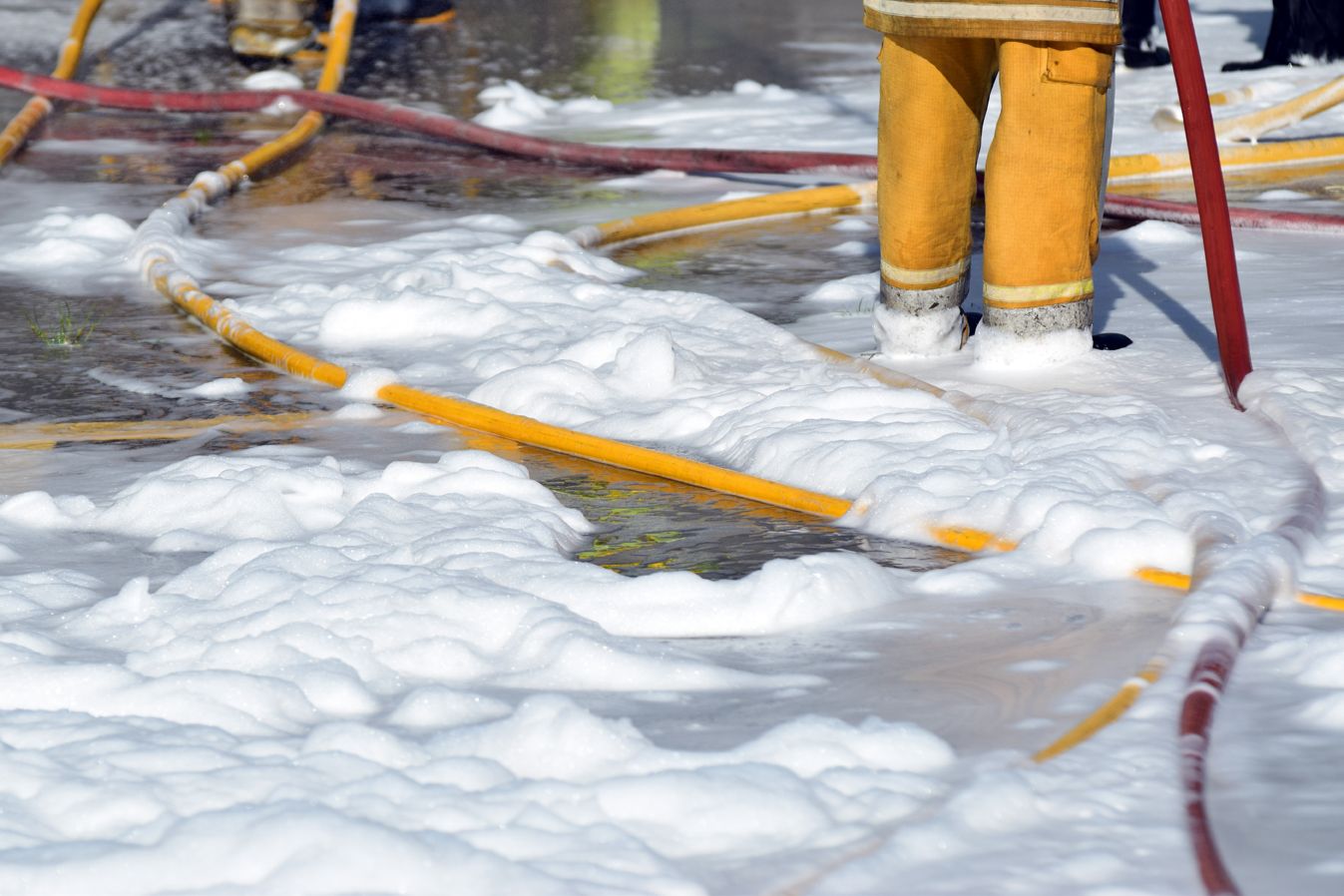
Mopping up excess firefighting foam
Kevin Jay Elder, 56, has a long history of living and serving at Ellsworth Air Force Base and a long list of medical problems he believes may be related to his time there and as an airman. Elder also served several deployments to Iraq and one to Afghanistan.
Elder said he was exposed to toxic fumes from military burn pits while serving in Iraq at various times from 2006 to 2010 and in Afghanistan and Saudi Arabia in 2012.
Elder, now a resident of Missouri, was born at Ellsworth when his father was stationed there, and he was stationed at Ellsworth himself for two years in the early 1990s as a B-52 crew chief. Elder also spent time as an F-16 crew chief at Joe Foss Field in Sioux Falls.
Elder said he was repeatedly exposed to firefighting foam while working on the flight line at Ellsworth and Foss. On a few occasions, Elder said he and others were told to use mops and buckets to clean up huge amounts of firefighting foam that had been overused during training exercises in hangers on the base.
“There were times the foam would fill up the hangers and alarms would go off,” he said. “We went in and cleaned it up because that’s what you do, you do your job.”
He also lived in housing just off the base where he has been told the water was contaminated with PFAS chemicals from the firefighting foam that leached into the groundwater.
Elder said Veterans Affairs has deemed him 100% disabled due to his service, though doctors have not pinpointed direct causes for his wide range of illnesses that include diabetes, “crazy” high blood pressure, allergies, anemia, numbness, gastrointestinal problems and post-traumatic stress disorder.
Elder said the totality of his conditions has made it impossible for him to hold down a job.
“I can’t do hardly anything I used to do,” he said. “I lose my balance, I have no feeling in my hands and my daily quality of life sucks.”
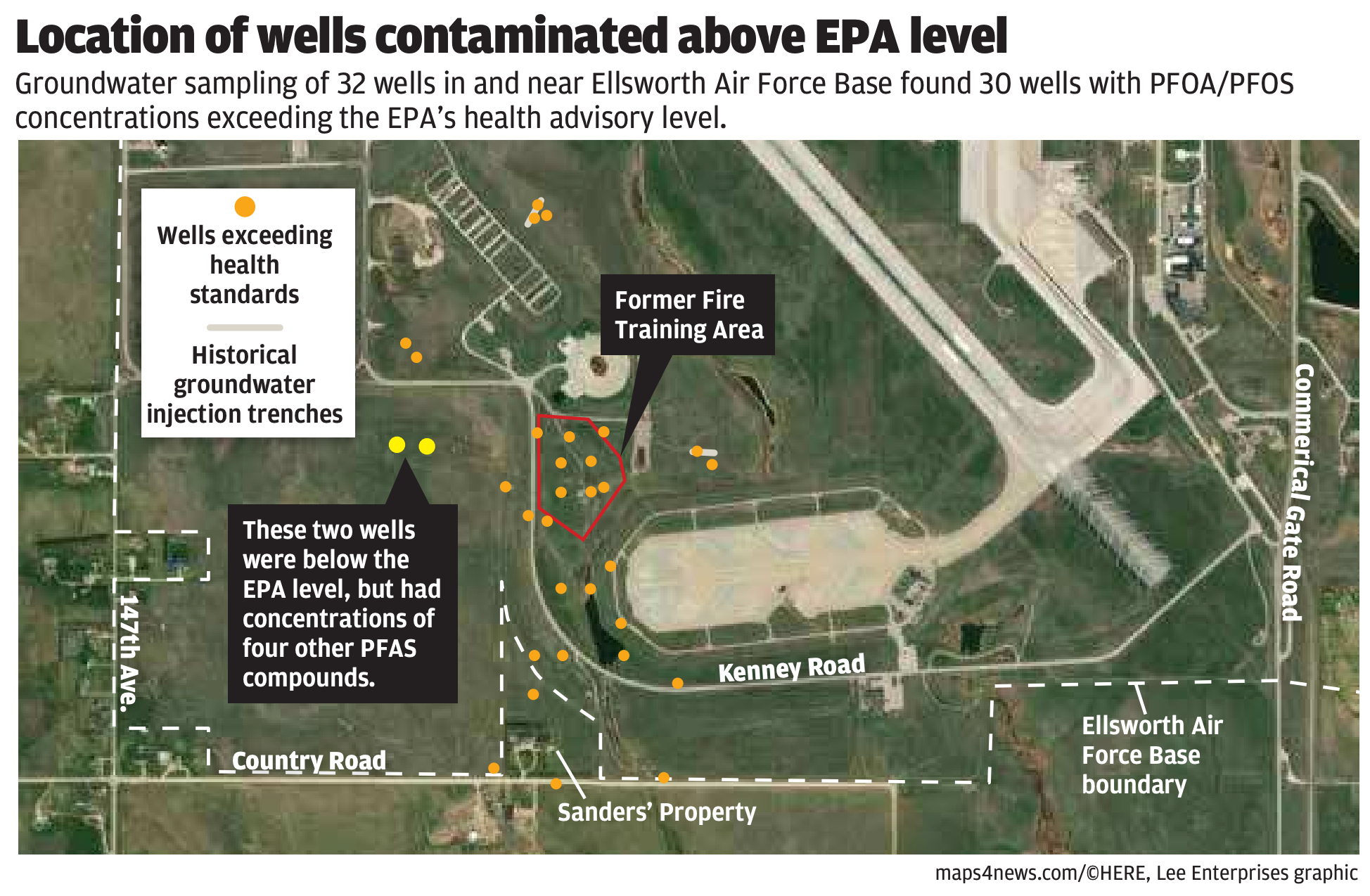
Elder said he isn’t sure if his military service led to his illnesses, but he’s curious to know more about a possible settlement because he has no family history of any of the illnesses he has endured.
“I signed up for it, to serve my country however I could,” he said. “I don’t know what has caused my health problems, but I’d certainly like to know more.”
Investigation continues at Foss Field
A remedial investigation into possible PFAS contamination is also underway at Joe Foss Field, an Air National Guard station in Sioux Falls where firefighting foam with AFFF was used from the 1970s until 2018, according to an email sent to News Watch by National Guard Col. Scott Linquist.
Previous inspections have shown that PFOS and PFAS were detected at “areas of concern on and in the vicinity of Joe Foss Field” where firefighting training and response activities took place, he wrote.
Drinking water at Joe Foss Field is supplied by the city of Sioux Falls, and in 2016 the EPA issued health advisories regarding levels of PFAS, Linquist said.
In July 2016, PFAS chemicals were found in the city of Sioux Falls water system but at levels below the EPA safety standard, he said. The city tested its wells and discontinued use of wells that showed any contaminants, and continues to do annual testing to ensure water safety, he said.
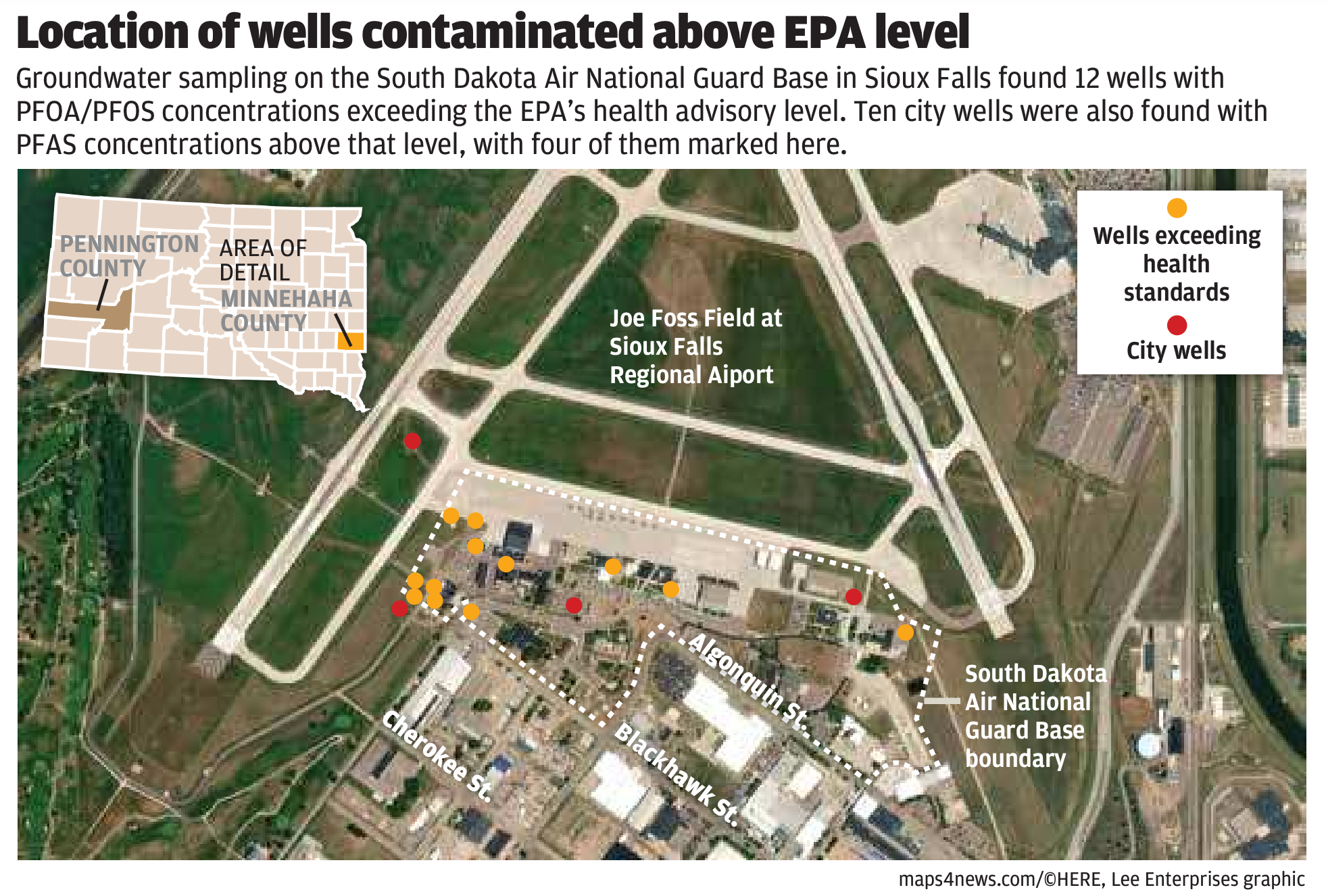
Testing data show that PFAS exposure to city water wells likely occurred from runoff into the Big Sioux River diversion canal, Linquist said.
The Air National Guard in the fall of 2016 transitioned all fire trucks from the AFFF foam to a new form called C6, which is believed to be safer and more environmentally friendly, Linquist said. In 2018, it swapped out AFFF firefighting foam in hangers with the safer C6 variety, he said. The guard also has systems in place to better capture any discharged foam, Linquist said.
“We recognize that a whole-of-government approach is needed to address what has become a national issue,” Linquist wrote. “The intended outcome is to identify unified solutions to PFOS/PFAS challenges through interagency relationships.”
Foam used frequently in the US and sprayed on children for fun
Olson, the Environmental Litigation Group lawyer, said research shows that the toxic firefighting foam was used at almost every military facility where aircraft were housed or deployed.
He said there is evidence that some firefighting agencies that weren’t aware of the risks would spray the foam on children at picnics for fun.
Rapid City Journal archives: The toxic legacy of firefighting foam
The firefighting foam litigation being handled by his firm includes about 40 defendants that include military branches, private contractors and product manufacturers, Olson said.
“It’s based on the science. And as more and more science comes out every day about the exposures, they can’t really fight it,” he said.

The main illnesses associated with direct or indirect exposure to toxins in firefighting foam include kidney, testicular, prostate and pancreatic cancer as well as ulcerative colitis and thyroid disease, Olson said.
The understanding of the high levels of exposure to PFAS chemicals, and the likelihood of resulting illnesses, is growing rapidly across the country, he said. “It’s evolving quickly, and I get updates every day about new risks,” he said.
Leukemia doesn’t run in his family
Mathew Bergendahl of Olympia, Washington, isn’t sure what caused him to get leukemia, but he has a strong sense it is related to his service as an Air Force Security Force officer during combat in Iraq or from his time spent at Ellsworth Air Force Base.
Bergendahl, 44, is an Eagle Scout who joined the Air Force to help his family run by a single mom. He returned to the Black Hills recently to collect his father’s ashes after his dad died in South Dakota.
From 2000 to 2005, Bergendahl was either serving in the Middle East or working along the flight line guarding B-1 bombers at Ellsworth.
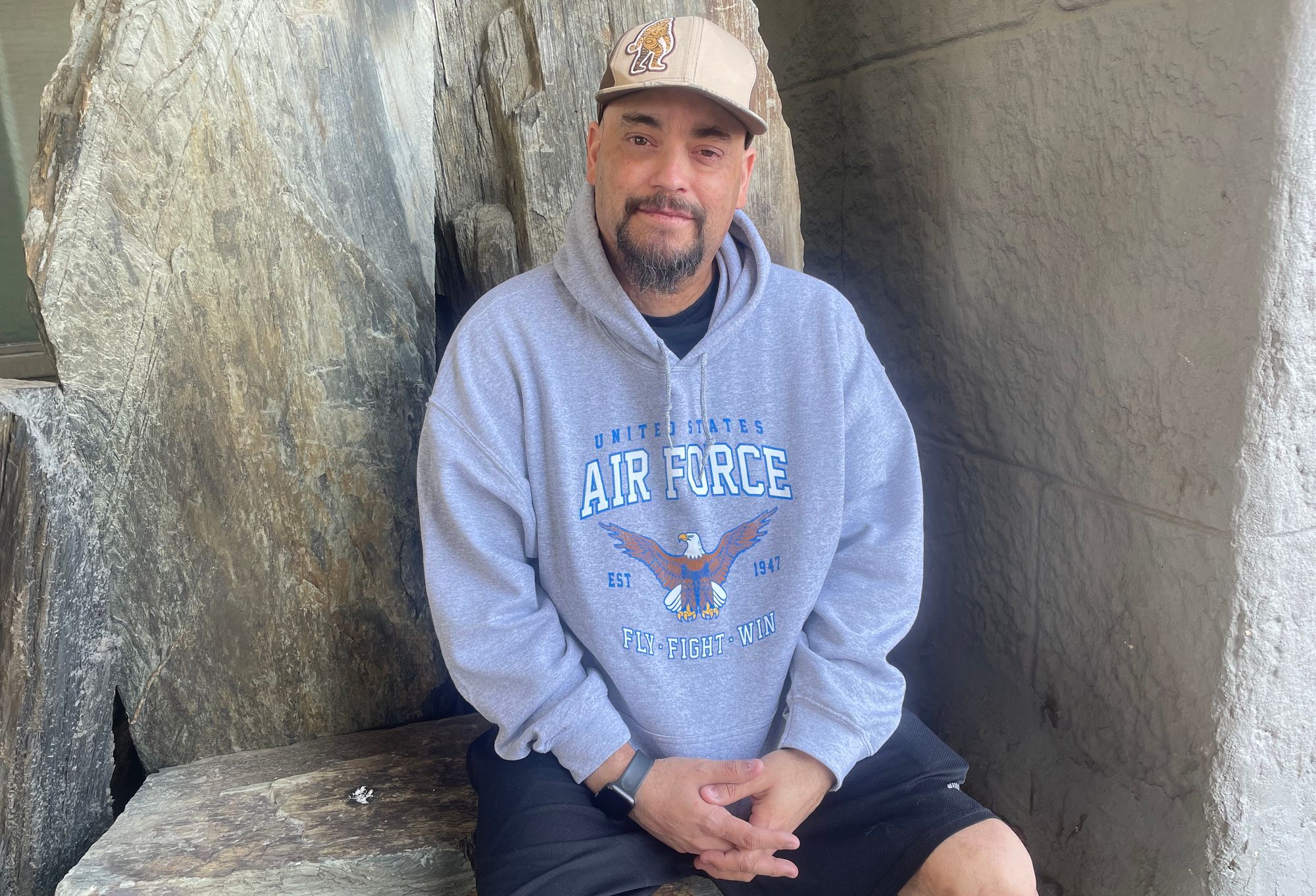
In Iraq, he survived on a jet that was shot up in flight, an explosion near his tent and exposure to toxic fumes from burn pits. At Ellsworth, he was present during numerous training exercises where the toxic firefighting foam was used on mock planes intentionally set on fire.
“It didn’t take much to see how messed up the water was when it collected on the flight line,” he said. “It was so polluted, it stunk like straight chemicals and had a gloss to it.”
In 2018, Bergendahl discovered welts that arose all over his body, and a blood test confirmed he had leukemia, which does not run in his family.
Eventually, he received a stem cell transplant that he believes put his cancer in remission and saved his life. He continues to have scarring on much of his body and his eyesight is affected by the cancer and the treatments.
Bergendahl said he learned about potential lawsuits over exposure to firefighting foam from an Ellsworth alumni page on Facebook and has signed onto a class-action lawsuit seeking damages for his illnesses. He said several of the people he served with at Ellsworth have died of cancer at relatively young ages.

Veterans making the best of things
Like other veterans exposed to combat and non-combat toxic exposures, Bergendahl is disappointed that the military didn’t do more and sooner to protect service men and women.
“I look at the government as this large machine, along with the military, and I’m conflicted because they had opportunities to do the right thing, to make ethical choices, and that wasn’t done,” he said.
And yet, Bergendahl looks back on his military service with pride and a philosophical approach that all his experiences, good and bad, have helped make him the man he is today.
“Those experiences have shaped who I am as a person, as a leader and as someone who’s been in a war zone. I feel like I’ve turned that around and made something positive out of it,” he said.
Seeking accountability for veterans
Kenrick, meanwhile, keeps in touch with former service members, including some who are battling cancer and other serious illnesses that often do not run in their families.
“If I think outside of myself, I know there’s people with much more serious problems than I have, and I think those people and their families need to be compensated,” he said. “It’s frustrating. And the unknown part of it can be scary in that I don’t know if I have to look forward to some of these serious cancers or illnesses down the road.”
Kenrick has signed onto a class-action lawsuit related to PFAS exposure and supports efforts to sue the government and other responsible parties for compensation.
“I want to make sure those people who have cancers and severe medical issues are taken care of, and if I can add my name to it to help, so be it,” he said. “And if I can get a little money to take a vacation or ease the pain of all this crap, that’s fine too. But at the end of the day, if we can get those people who are severely affected by this some help, that would be No. 1.”
Resources for military veterans
Here are some online resources for veterans to learn more about potential exposure to toxic PFAS chemicals:
U.S. Department of Veterans Affairs PFAS website
Air Force website on PFAS exposure
Department of Defense website on PFAS exposure
Defense Health Agency PFAS website
Veterans Crisis Line: Dial 988, then press 1

